How to perform CPR
Few Americans know the mechanics of how to give CPR — which stands for cardiopulmonary resuscitation — though many have heard of the concept and have an idea of what it is.
CPR is a technique involving chest compressions that any bystander can and should perform when someone's heart stops, a condition known as cardiac arrest. CPR can help restart the heart and keep blood flowing to important organs, like the brain, until medical attention is available. Without CPR or other treatment, a person in cardiac arrest can die in minutes, according to the U.S. Centers for Disease Control and Prevention.
“You are alive because you are breathing and your heart is beating,” Dr. George Syros, associate director of cardiology at Mount Sinai Queens in New York City, tells TODAY.com. “If your heart stops beating, you don’t have blood going to the brain. When a person’s heart stops, beating CPR is a mechanical way to (temporarily) take over the job of the heart and the lungs.”
One survey found that while 54% of people said they knew about CPR, only about 10% actually knew how to perform it correctly, including the rate at which compression should be delivered, Dr. Ali Nsair, medical director of heart transplantation and mechanical circulatory support device services at the David Geffen School of Medicine at University of California Los Angeles, tells TODAY.com.
An estimated 90% of people who experience cardiac arrest outside a hospital die, but if someone performs CPR in the first few minutes, the odds of survival double or even triple, according to the CDC.
“The American Heart Association has done a lot of campaigns to raise awareness about CPR,” Nsair says. “It’s something we just have to keep pushing in schools, workplaces and everywhere we can.”
If you haven’t taken a course in CPR, know that the American Red Cross and American Heart Association offer training courses.
What are the 7 steps of CPR?
The American Red Cross lists the following as the seven steps of CPR:
1. Check the scene for safety and put on any personal protective equipment, such as a mask.
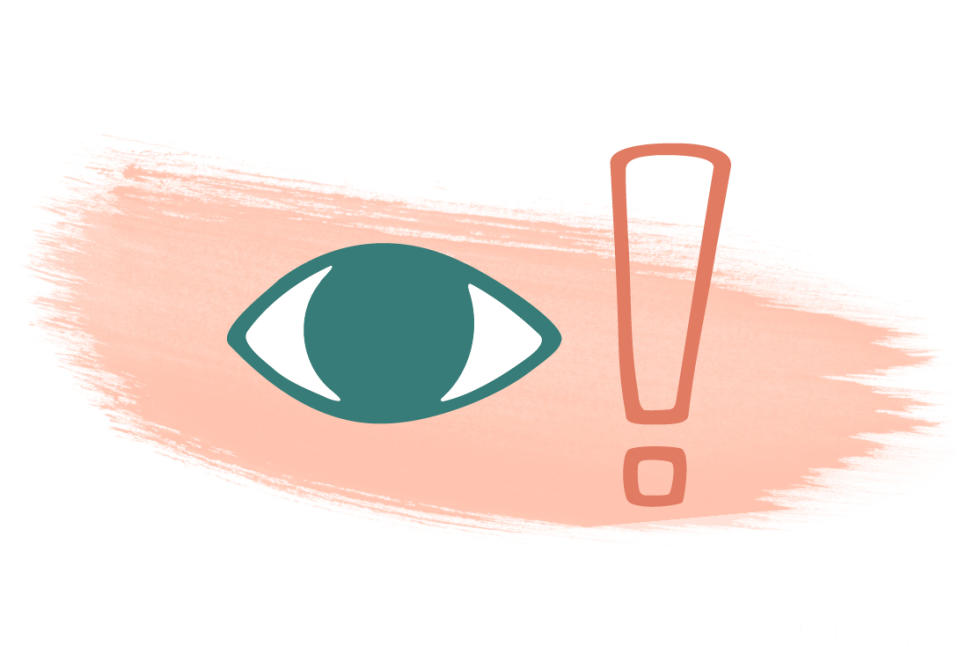
2. If the person appears unresponsive, check for breathing, bleeding and other life-threatening conditions by shouting, tapping their shoulder and shouting.
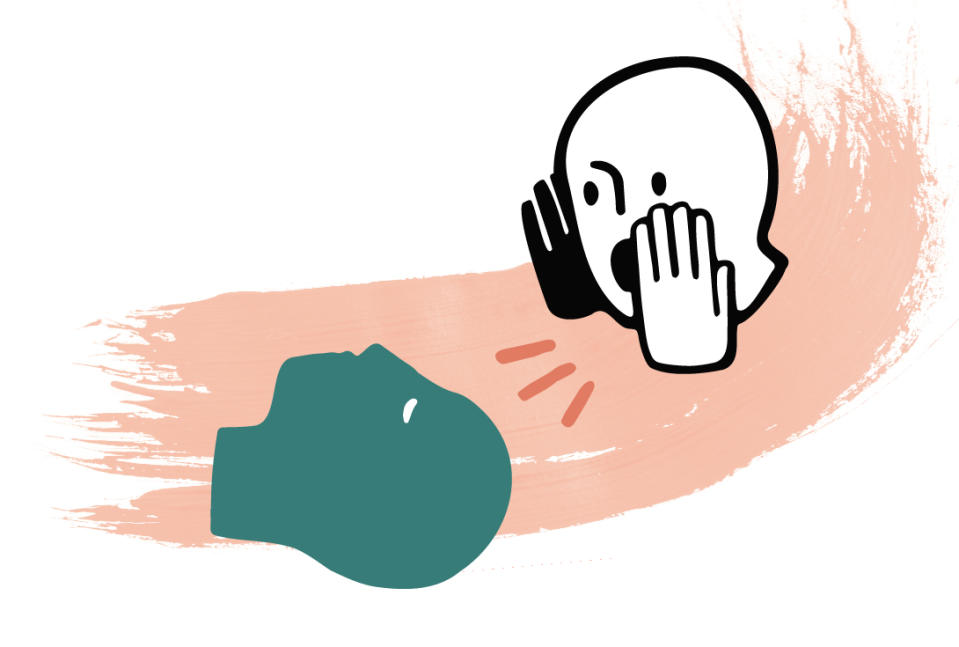
3. If the person isn't responding or isn't breathing and only gasping, call 911 or tell someone else to do so and ask them to get a defibrillator, aka an AED.
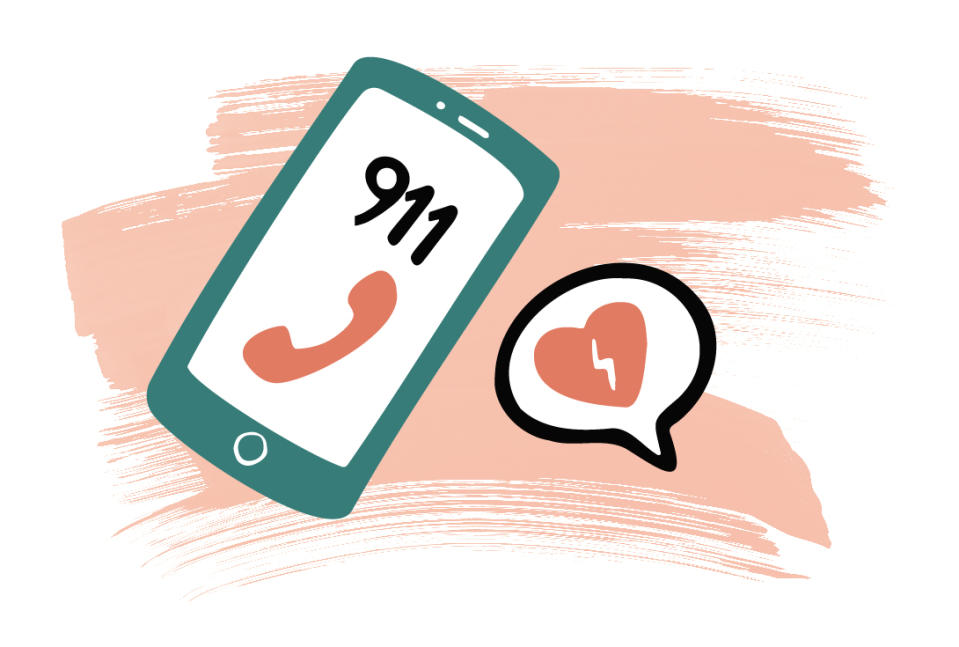
4. Place the person on their back on a firm, flat surface.
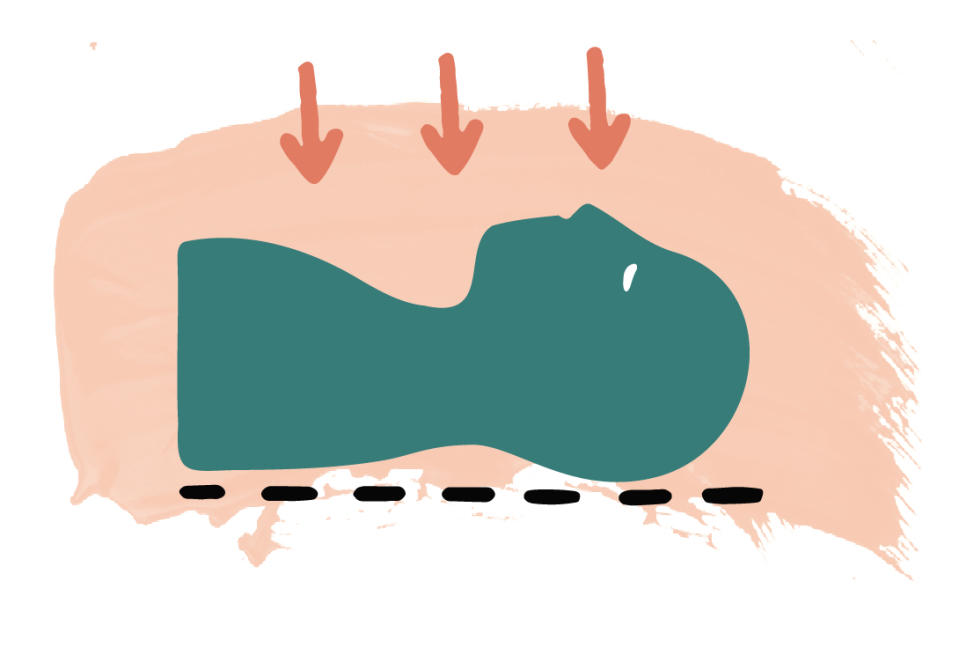
5. Give 30 chest compressions at a rate of 100 to 120 a minute.

6. Give two breaths.
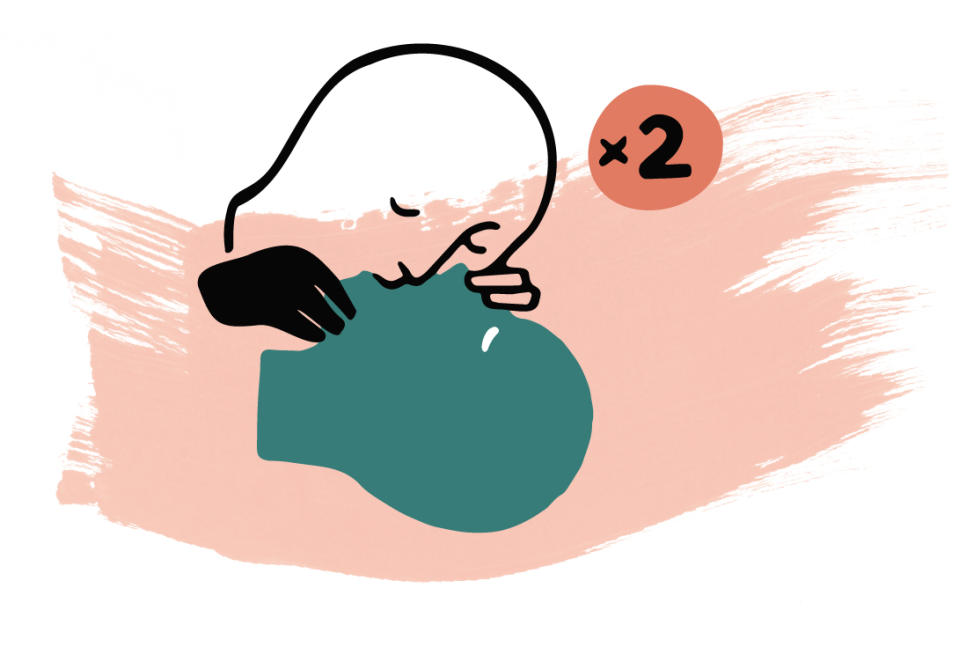
7. Repeat the cycle of 30 compressions and two breaths. Use an AED by following its instructions as soon as it's available.
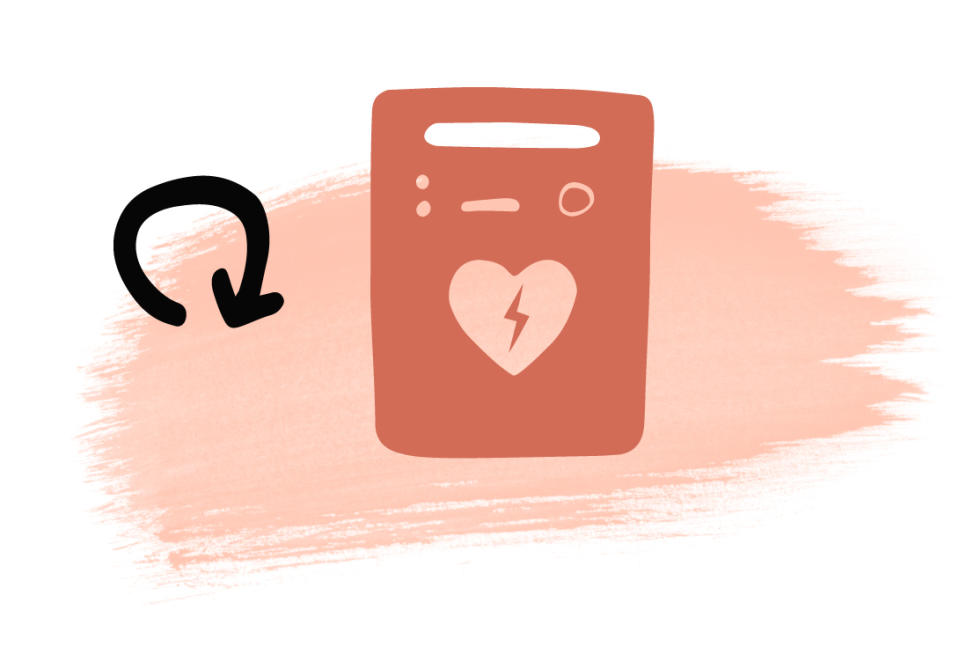
How do you know if someone needs CPR?
If the person is talking and breathing, then they don’t need CPR, per the CDC. Signs that someone may be experiencing cardiac arrest and therefore needs CPR include:
The person is fine one moment, but then they suddenly collapse.
The person is unresponsive, even if you shake or shout at them.
The person isn't breathing or is only gasping.
If you are layperson untrained in CPR, you should not take time to try to find a pulse if the person has collapsed or is unresponsive and not breathing normally, according to the American Heart Association's 2020 guidelines on CPR. Instead, start CPR.
Untrained bystanders usually take too long to try find a pulse or they'll misidentify their own pulse as the other person's, according to University of Arizona's Sarver Heart Center. Seeing a person collapse without signs of choking is enough of a reason to assume cardiac arrest and perform CPR, as the chest compressions will likely dislodge any object that's been lodged in the throat.
"We recommend that laypersons initiate CPR for presumed cardiac arrest because the risk of harm to the patient is low if the patient is not in cardiac arrest," the American Heart Association states.
If you're trained in CPR and want to try to find a pulse, place two fingers on the side of the neck at the carotid artery next to the Adam's apple, and take no more than 10 seconds to do so, Dr. Demetris Yannopoulos, medical director of the Center for Resuscitation Medicine at the University of Minnesota Medical School, tells TODAY.com.
What if the person is choking?
If you see a person choking, the first thing you should do is perform the Heimlich maneuver to clear her airway, Syros says. “It that fails and they lose consciousness, call 911 and then do CPR,” he adds.
What to do before you start CPR
It's important to start CPR as quickly as possible, but there are a few steps to take before starting chest compressions to make sure you're being as effective as possible, according to the American Red Cross.
Make sure the area is safe to perform CPR and that there's nothing in the environment, such as cars, that would endanger you.
Confirm the person isn't responsive by shaking their shoulder and asking in a loud voice if they're OK.
Look for life-threatening bleeding or other conditions.
Call 911 or ask someone nearby to do so. Also ask that person or someone else nearby to find a defibrillator, aka an AED, which can shock the heart back into action.
Place the person on their back on a firm, flat surface.
How do you do CPR?
There are two different ways to perform bystander CPR. One involves just chest compressions, known as hands-only CPR. The other involves chest compressions and rescue breathing, also known as mouth to mouth.
If you're comfortable performing rescue breathing, doing both is better because it adds oxygen in addition to pumping blood around the body, Yannopoulos and Nsair say.
If you're not comfortable performing rescue breathing, doing only chest compressions is better than doing nothing at all.
How many compressions for CPR?
The American Heart Association says to give compressions at a rate of 100 to 120 per minute. This matches up with the beat of the song “Stayin’ Alive” by the Bee Gees, as does “Baby Shark” and “Dancing Queen” by Abba.
CPR in adults
Often, a 911 dispatcher will be able to talk you through the details of performing, Yannopoulos says. But here are the basics:
After making sure the person is lying spine down on a hard surface, kneel next to their chest.
Place the heel of the palm of your dominant hand in the center of the person’s chest and place the other hand on top. “Imagine a line between the persons nipples,” Nsair explains. “Put your hands directly on that line."
"Use your weight to push down 2 inches deep at least," Nsair adds.
Allow a recoil by taking your weight off your hands, Yannopoulos says.
“You do that over and over again at a pace of about 100 per minute, or with the rhythm of the song, ‘Stayin’ Alive,’” Yannopoulos adds.
CPR with mouth to mouth
If you feel comfortable giving mouth to mouth, supply two rescue breaths after every 30 compressions, according to the American Heart Association.
To give a rescue breath, the Mayo Clinic recommends:
Open the person's airway by putting your palm on the person's head and tilting their head back. Use the other hand to lift the chin.
Pinch the nostrils shut.
Cover the person's mouth with your mouth, making a seal.
Give one breath lasting one second.
If the chest rises, give another breath.
If the chest doesn't rise, try to open the airway again by tilting the head back and lifting the chin again.
Resume chest compressions.
“In the era of COVID, the American Heart Association recommends hands only CPR and not to worry about rescue breaths, unless it’s a loved one or person you know," Nsair adds.
CPR in teens
The procedure is the same as it is with adults, Nsair says.
Make sure the person is lying on their back on a firm, hard surface.
Place the heel of your dominant hand in the center of the person's chest and the other hand on top.
Push down about 2 inches deep.
Take the weight off your hands, and repeat at a pace of 100 compressions per minute.
If comfortable doing so, perform mouth-to-mouth resuscitation — two breaths after every 30 compressions.
CPR in children
According to the American Red Cross, here's how to give CPR in a child:
Kneel beside the child.
Place the heel of one hand on the child's chest with your other hand on top. Interlace your fingers and keep them off the child's chest. For a small child, you can use just one hand.
Push down about 2 inches at a rate of 100 to 120 compressions per minute.
The chest should return to normal after each compression.
If comfortable, after every 30 compressions, open the airway and give one breath lasting a second.
If the chest rises, allow the air to exit and then give another breath.
If the chest does not rise, try to open the airway again and make sure you're forming a seal around the mouth.
Repeat giving 30 compressions and two breaths.
CPR in infants
“With infants it gets a little tricky,” Nsair says. “First flick the bottom of a foot to see if the child is responsive." If the baby isn't responsive and isn't breathing, the American Red Cross recommends:
Place your thumbs side by side on the center of the baby's chest just below the nipples.
Use your other fingers to wrap around the baby's chest to provide support.
Use your thumbs to push down about 1 1/2 inches at 100 to 120 compressions a minute. If you can't reach 1 1/2 inches, consider using one hand.
Let the chest return to normal between compressions.
If you're comfortable giving mouth to mouth, open the airway and give two breaths after every 30 compressions. Each breath should last one second.
Make sure the chest rises with each breath and the air exits. If the chest doesn't rise, try opening the airway and forming a seal with your mouth again.
Repeat giving 30 chest compressions and two breaths.
How to use a defibrillator, or AED
“The AED comes with very clear instructions,” Nsair says. “It has a pad to put on the center of the chest. Once you turn it on, it gives voice prompts.”
The AED will analyze the person’s heart rhythm, Nsair adds. “There are certain specific rhythms that are shockable," such as ventricular tachycardia and ventricular fibrillation, he adds. “If (the AED) says ‘no shock,’ resume CPR right away because it’s always better to keep doing it than not.”
You'll need to remove the recipient's clothing covering the chest and wipe their chest dry, if necessary, in order to attach the AED, per the Red Cross.
This article was originally published on TODAY.com

